Pond Liners
Enviroseal Pond Liners
Enviroseal’s geomembrane containment lining systems offer hydraulic barrier applications that are ideally suited as pond liners. The primary purpose of pond liners is to maximize water retention. Both natural and man-made ponds experience chronic water loss, which in turn, diminishes the utility and value of the pond itself. With ponds having both aesthetic and practical purposes, the installation of a pond liner will effectively extend the lifespan and improve the overall quality of the targeted aquatic source.
Today, it is not unusual to find ponds in many common environments such as golf courses. Golf ponds, as an example, are a type of aquatic feature that is generally in place for aesthetic purposes. In these circumstances, there is a desire to maintain suitable water levels, as well as water quality (in terms of clarity). A golf pond liner will not only significantly reduce water loss, but it will also minimize the amount of silt from the subsurface that would otherwise be introduced into the water. Less silt/dirt will maintain water clarity and a more pleasing visual presentation.
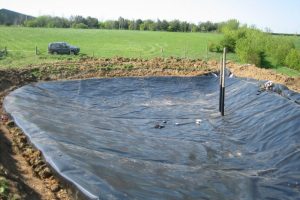
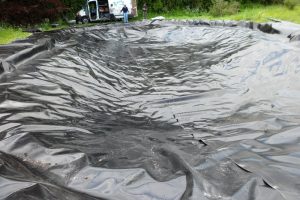

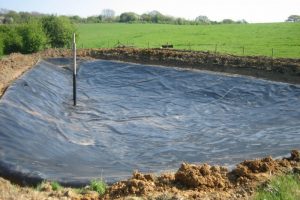
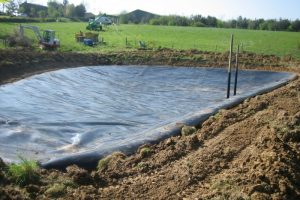
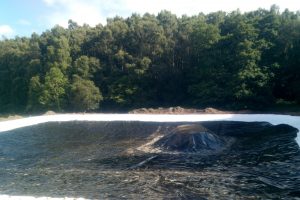

Equally, water loss in other types of ponds such as fishing ponds and farm ponds is a typical problem. Naturally formed ponds, especially, will have water retention issues as a result of normal ground absorption and prevailing weather conditions. Additionally, with ponds that provide significant refuge for animal life, such as fish ponds, there is the undesirable possibility of water contamination from pollutants in the ground. Once again, a fish pond liner is an applicable resolution that suitably addresses these concerns.
Enviroseal’s geomembrane liners are impermeable and effectively eliminate water loss through ground absorption. Essentially, geomembranes are hydraulic barriers that prevent liquid from passing through it. There are various types of geosynthetic materials available, each with its own set of characteristics and properties. For pond lining applications, Enviroseal has found through its experience that High Density Polyethylene (HDPE) and Low Density Polyethylene (LDPE) liners are most effective.
The reason for this is that polyethylene is very flexible and resistant to punctures. This is an important feature considering that the subsurface terrain for many ponds is uneven and populated with rigid debris (rocks, tree branches, etc.). Risk of puncture from these objects is minimized by utilizing a geomembrane that is durable enough to withstand this type of environment. Polyethylene pond liners are also ideal because of its ability to be contoured to uneven surfaces without losing integral strength. A pond lining of this type is also resistant to temperature variations. Enviroseal is also able to provide additional pond lining protection by installing protective geotextile materials between the ponds surface and the applied pond liner. It should be further noted that our pond liners are completely eco-friendly and environmentally safe. In fact, polyethylene is completely harmless to wildlife such as fish, making pond liners of this sort ideal for fish ponds and fish farms.
Once a decision has been reached regarding the installation of a pond liner, Enviroseal’s engineers will evaluate the targeted site. Such issues as pond liner size and thickness needs to be determined. Pond liners range in thickness from .03 mm to 2.00 mm. The thickness needed for any specific application is determined by the type of subsurface terrain that has to be covered and what type of soil will be placed on top of the liner. In general, terrain that is extremely rugged will require thicker pond lining than surfaces that are not. Each roll of polyethylene is vigorously tested for quality to ensure that the pronounced characteristics are provided.
Site preparation and installation are the final steps in the process. Enviroseal technicians, all of who possess BS and TWI certifications, will ensure that terrain conditions are suitable for pond lining installation. This may include the introduction of protective geotextiles, or of other protective substances such as sand. The polyethylene panels that make up the pond liner are manufactured in large rolls. Panels are either welded together or heat seamed on site. Geomembrane panels can be customized and fabricated to accommodate needed configurations for ponds of any size. Even polyethylene panels of large sizes can be heat seamed to provide barrier protection for very large ponds and other bodies of water.
The introduction of a quality hydraulic barrier will enable effective water preservation measures. Geomembrane pond liners offer an affordable and readily available solution for the protection of aquatic resources and Enviroseal is positioned to provide clients professional expertise and assistance in this endeavour.
